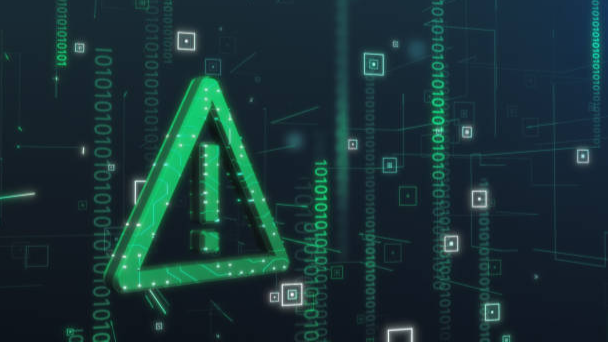Can you believe that blockchain has extended its arms to luxury and fashion retail? Isn’t it astonishing? Blockchain and its uses are commonly related to financial, digital, and NFTs. This new advancement in luxury and fashion retail has startled many.
Globally, brand trust ranks highest among sustainability-related purchasing factors for nearly two-thirds (62%) of consumers. Customer trust scores rise when there is transparency in the supply chain.
Blockchain improves the customer experience and strengthens brand connectivity. Customer loyalty and lifetime value rise in tandem with elevated trust scores. So, let’s dig into how blockchain and its uses become a part of luxury and fashion retail.
Redefining Blockchain and its Uses
Some people are still in awe of the redefined roles of blockchain and its uses. Its high time to understand its importance as given:
Transparency
Companies are able to share verifiable claims with their customers. As a result, it is increasing customer trust and authenticity.
Traceability
Thanks to traceability! Companies are able to keep track of their products’ entire provenance and their underlying components from the point of origin to the point of sale.
Support for Sustainable Practices
These fundamental capabilities enable these additional advantages for industry stakeholders:
Redefinition of the customer experience
The authenticity of the brand
Enhancement of consumer trust
Improvement of data management
Reduction of Costs and Settlement Time
Producers can ensure that third-party goods are transferred appropriately and that final product labels are adhered to when supply chain tracking is transparent. Blockchain can record asset progression, display previous asset records, and store information. Blockchain has the potential to raise the global level of sustainable and ethical consumption and production of any commodity.
Find out more about supply chain management, blockchain, and its uses at profit builder now.
Blockchain and its Uses in Retail
Sustainability is now almost a necessity rather than a “nice-to-have.” The following background information is displayed to customers when they scan the QR code of an item: who owned it, where it was worn, and how the purchase helped the environment. Customers can choose which charity will receive their donation and transparently monitor how it has been spent on the blockchain.
How does Blockchain Bring Luxury and Fashion Retail Authenticity?
Brands can tokenize non-fungible assets using blockchain technology, making it simple to hold, purchase, exchange, and trade each asset. Through digital twin technology, which links the real and digital worlds, luxury retail items can be marked with a one-to-one counterfeit-proof feature and tracked.
How does Blockchain Increase Customer Confidence?
The top 200 most well-known fashion retailers and brands have an average transparency score of just 21%. Brands can use blockchain to record every step in the supply chain in an immutable way, capture specific data points like sustainability certifications and claims, and give the public open access to this data.
How can Blockchain Improve Data Management?
Processes that are not optimal and critical reconciliation issues result from data management in silos. A blockchain makes it simple to add important data to it and securely share it with partners, operations, and business lines. When trust is at stake, blockchain is the technology of choice for sharing information.
How does Blockchain Reduce Cost?
By enhancing supply chain management, improving data management tools, and lowering the risk of counterfeits and grey markets, blockchain technology can significantly cut operating costs in luxury and fashion retail. Data reconciliation across service lines and operations is made simpler and lighter by the lightweight and simple-to-integrate blockchain layer.
What are the Retail Fashion and Luxury Use Cases for Blockchain?
In 2016, counterfeits worth $590 billion accounted for 3.3% of global trade. The creation of “digital twins” on the blockchain is made possible by tagging physical objects with IoT, RFID, photography, or QR codes.
How does Blockchain Affect the Traceability of Products?
By 2025, millennials will account for 50% of the global luxury market, which will reach €1.3 trillion ($1.5 trillion). The expectation that luxury brands adhere to their values grows in importance as millennials and Generation Z consumers account for 85% of global growth in luxury sales. Brands can more effectively and transparently manage their supply chain processes, from raw materials to the final consumer, with distributed ledger technology. Brands that are willing to use blockchain technology to display this level of information to customers will have a significant advantage over competitors.
How does Blockchain Affect Loyalty Programs?
Today, “digitally influenced” from around the world, 80 percent of luxury sales are made, but loyalty program value is usually locked into a few countries. Customers’ expectations of seamless global transactions rise as they embrace a global lifestyle. Tokenization opens up a new way of thinking about loyalty programs and lets luxury customers do business with partners other than the brand.
Conclusion
The crypto industry is progressing day by day and we see its branches in almost every field. Therefore, you must be familiar with the uses of blockchain in fashion and luxury as well. Days are gone when the retail industry was following those old practices. If the fashion industry wants to increase its profit then they have to accept the importance of blockchain. To keep yourself updated on the new blockchain and its uses, sign up at bitcoin prime today.







